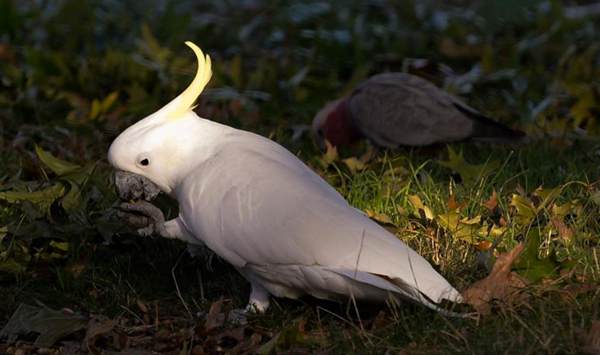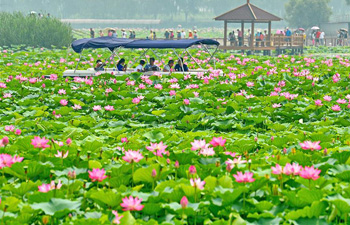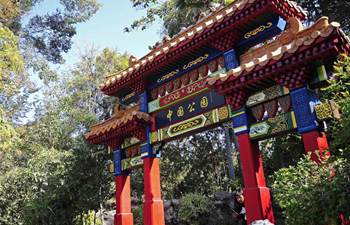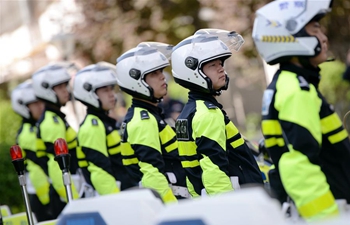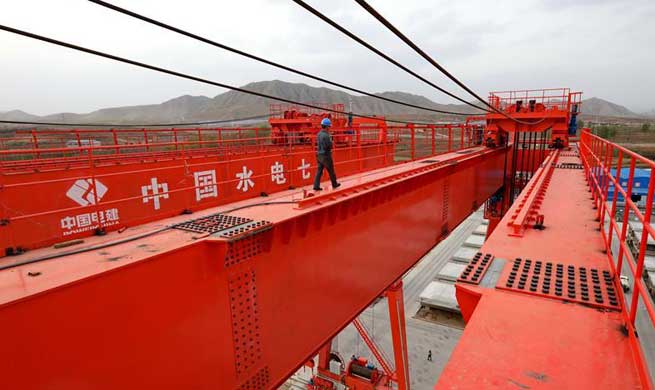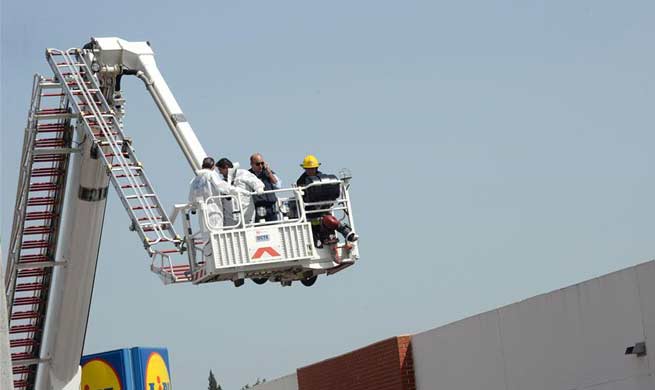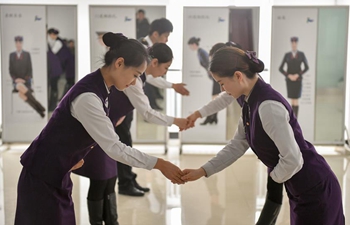by Xinhua Writer Yuan Quan
BEIJING, April 18 (Xinhua) -- Many Chinese would think nothing of spending 200 yuan (29 US dollars) on a big meal or watching a Hollywood blockbuster.
But would they pay so much for a kite - often seen as little more than a children's toy?
Liu Bin, 40, wants to change that perception.
He owns a small kite shop in downtown Beijing's Di'anmen Street. It is decorated with distinctive kites, mainly in the shapes of swallows, goldfish, the legendary Lord Rabbit, dragons, the Monkey King, and Peking Opera masks. Some are tiny enough to fit in the palm of your hand, while others cover an entire wall.
Most are handmade and they all sell for more than 200 yuan, about ten times of the price of his online rivals. More expensive kites could cost tens of thousands yuan.
Liu says his kites deserve their high price tags: "A kite is more than a flying toy. It is made with rich Chinese culture and a craftsman's wisdom."
Kite flying has a history of more than 2,000 years in China. It is thought to have begun as a means to pass military information in war, and gradually became a popular folk pastime in spring.
In ancient times, people wrote down their sufferings on kites. When the kites flew very high, they would cut the lines, hoping their misfortunes would also disappear.
Unlike mass-produced kites made of umbrella cloth and carbon fiber, a Chinese craftsman usually makes a frame of bamboo, which needs cutting and trimming, and then paints the sails in traditional Chinese styles. He then ties the kite to the reel and flies it.
It is a very laborious process. Liu says a kite usually takes 20 days to make.
Liu's great-grandfather was a craftsman serving in the Forbidden City in the late Qing Dynasty. He was in charge of making lanterns, fans and kites. He had mastered kite-making skills passed down through the ages in the imperial palace.
In the turbulent years following the collapse of the Qing Dynasty, kite flying lost its popular appeal. To support his big family, his great grandfather opened a dumpling shop in suburban Beijing, and made kites in his spare time.
Liu's grandfather and father inherited the art of kite-making, but it was impossible to subsist on the craft alone. Regrettably, many of the drafts, drawings, samples and records of kites failed to survive the "Cultural Revolution".
Liu recalls the day his grandfather flew a dragon kite train on Tian'anmen Square in 1982. It was 130-meters-long, comprising a dragon head and 270 similar kite sections to form the body. Liu Bin, then 5, watched as people thronged to the square, cheering the flying "dragon".
Fascinated by the craft, Liu assembled his first kite at age 10. His parents found he had a flair for designing and crafting kites, so they decided to cultivate him as an inheritor.
After graduating from university with a major in graphic arts, Liu began his career in kites, while most of his schoolmates were employed to design "bigger things".
"I felt ashamed at first," Liu recalls. But he dared not refuse his family. In 2003, he began running a kite shop, and studied with master kite makers to upgrade his skills.
Liu has seen a growing revival of interest in kites. His business began thriving after a swallow kite in 2005 was designed to be one of the five Beijing Olympic mascots - the Fuwa Nini.
Swallows are migratory birds that arrive every spring in Beijing and fly south to winter. In Chinese folk lore, it is a sign of good fortune when a swallow makes a nest in one's house.
Kites brought Liu good fortune. In 2008, sales could reach 100,000 yuan a month. Media, including the Lonely Planet tour guide, and tourists flocked to his shop, as did visiting foreign leaders.
He became a cultural ambassador, frequently being invited to talk about the craft abroad.
"In the West, kite flying is usually seen as a sport, so foreigners are very surprised to see Chinese kites, which have clever designs, exquisite craftsmanship and pretty paintings," Liu says.
"I tell them that kites carry people's best wishes. For example, a bat represents luck; a fish means abundance; and a peach is a symbol of longevity in Chinese culture, so it is a good gift for older generations."
His favorite work was the "Ballet Dancer". In 2011, China's Central Ballet Troupe invited him to make a kite to commemorate their Nutcracker performance. Liu designed a dozen models over a year, and a Ballet Dancer was eventually chosen. He painted a blue and white porcelain pattern on it, and formed it in the shape of a swallow whose tail mimics the toes of a ballet dancer.
Since then, Liu has been inspired to combine more traditional cultural elements into his works, such as the Dunhuang frescos, woodcut prints, and Tibetan thangka paintings.
"I want to elevate the kite from a toy to a work of art," he says.
Liu has striven to combine traditional craftsmanship with modern technology. An enthusiast of digital tools, he has used computers and 3D printers to replace traditional manual design. The use of new technologies enables him to paint faster than previous generations did. "They were shocked," says Liu with a proud smile.
In 2011, Liu was nominated as the representative of the craft by Beijing's Xicheng District Government.
But he feels alone now. He is known as "the last master of handmade kites in Beijing".
The craft has been verging on extinction amid China's modernization. Liu says villages in the countryside around Beijing and Tianjin used to be teeming with handmade kites. "Almost every household was involved in making kites." But inhabitants now flock to the cities for work.
Kite prices keep falling. Many are made of low-quality materials and by machines.
Flying kite is also more difficult in Beijing. Severe air pollution and airspace control have scared people away.
Now, he spends most of his time giving classes on kite making to young people. He says it boosts his income and enables more people enjoy the craft.
Liu describes kites as the love of his life, despite the difficulties they entail. "It's been 15 years since I took up the trade. I think I cannot let the kite go."





